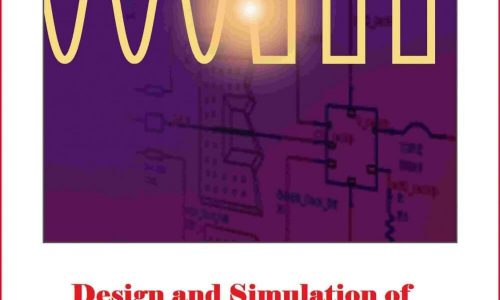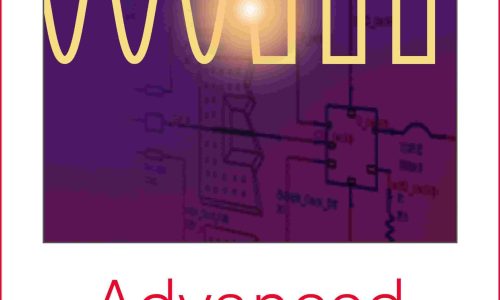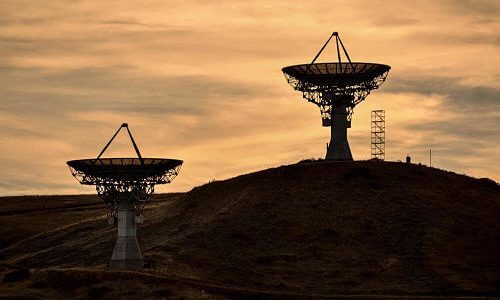Course Title: Microwave Amplifier and Low Noise Amplifier (LNA) Design Theory and Principles (RAHRF526)
Course Description: Welcome to Rahsoft’s Microwave Amplifier and Low Noise Amplifier (LNA) Design Theory and Principles course (RAHRF526), a pivotal component of the Rahsoft Radio Frequency Engineering Certificate. This course is your gateway to mastering the practical aspects of LNA and Microwave Amplifier design, supplemented with hands-on tutorials and introductory simulations using Keysight’s Advanced Design System (ADS).
Course Highlights:
- Preparation for Simulation: While the primary software simulation is covered in the separate course RAHRF526-L (Microwave Amplifier and LNA Simulation Lab), RAHRF526 lays the essential theoretical groundwork to ensure you’re well-prepared for the practical application in RAHRF526-L.
Course Content Overview: In RAHRF526, we will revisit the foundational concepts of microwaves before delving into the exciting world of Microwave Amplifier Design. This comprehensive journey includes various crucial topics:
6.1 A BRIEF REVIEW OVER MICROWAVES (4 Modules):
- Explore the distinctions between lumped analysis and distributed analysis.
- Recap the fundamentals of transmission lines.
- Summarize the significance of S-parameters.
- Gain proficiency in the use of Smith Charts.
6.2 MICROWAVE AMPLIFIER DESIGN (12 Modules):
- Understand the intricacies of Two-Port Networks and their role in power gain.
- Master the calculations of power gain, available power gain, and transducer power gain.
- Dive into power formulas, including GA, GT, and power calculations.
- Gain insights into Microwave Amplifier Models and the concept of single-stage transistors.
- Explore stability in Microwave Amplifier Design and work through practical examples.
- Learn the art of designing for maximum gain, including matching circuit design.
- Leverage Amplifier ADS simulation to apply theoretical knowledge.
- Navigate Constant-Gain Circles for designing amplifiers with specific gains.
- Implement small-signal models for amplifier design using ADS.
6.3 LNA DESIGN (5 Modules):
- Grasp the nuances of Low Noise Amplifier (LNA) design.
- Analyze Noise Figure and Noise Factor in LNAs.
- Understand Noise Figure for two-port networks.
- Explore Circles of Constant Noise Figure.
- Apply LNA Design principles through practical examples and simulations using ADS.
Who Should Enroll: This course is designed for individuals pursuing the Rahsoft Radio Frequency Engineering Certificate and those seeking a profound understanding of Microwave Amplifier and Low Noise Amplifier (LNA) design principles. If you aspire to excel in the field of RF engineering, this course is your stepping stone towards success.
Please Note:
- Theoretical concepts covered in RAHRF526 are vital for the RAHRF526-L course.
- Expect a combination of theoretical insights and practical examples.
- Prepare to embark on a journey that will enable you to design and simulate Microwave Amplifiers and LNAs confidently.
Join us in RAHRF526 and unlock the power to design high-performance Microwave Amplifiers and LNAs with precision and expertise. This course is your key to mastering the core principles of RF engineering.
For a complete list of Pre-Requisite and available courses please refer to the below table:
Course Features
- Lectures 52
- Quiz 0
- Duration 8 hours
- Skill level All levels
- Language English
- Students 324
- Certificate Yes
- Assessments Yes
Curriculum
- 8 Sections
- 52 Lessons
- 900 Weeks
- Introduction6.0 Introduction3
- 6.1 A brief review over microwaves4
- 6.2 Microwave Amplifier DesignTwo Port Network and Power5
- 6.2 Microwave Amplifier DesignPower Formula7
- 4.16.2.3.1 Power Gain Formula14 Minutes
- 4.26.2.3.2 GA and GT Formula8 Minutes
- 4.36.2.3.3 Power Calculation Example6 Minutes
- 4.46.2.3.4 Power Calculation using ADS12 Minutes
- 4.56.2.3.5 Microwave Amplifier Model11 Minutes
- 4.66.2.3.6 Single Stage Transistor21 Minutes
- 4.76.2.3.7 Is always GT = |S21| ^ 27 Minutes
- 6.2 Microwave Amplifier DesignStability3
- 6.2 Microwave Amplifier DesignAmplifier Design12
- 6.16.2.5.1 Design For Max Gain12 Minutes
- 6.26.2.5.2 Design For Max Gain Example4 Minutes
- 6.36.2.5.3 Design of Matching Circuit14 Minutes
- 6.46.2.5.4 Amplifier ADS simulation7 Minutes
- 6.56.2.5.5 Design Amplifier in ADS18 Minutes
- 6.66.2.5.6 Constant-Gain Circles and Design for Specific Gain16 Minutes
- 6.76.2.5.7 Constant-Gain Circles Example12 Minutes
- 6.86.2.5.8 Constant-Gain Circles Example using ADS10 Minutes
- 6.96.2.5.9 Design Amplifer for Specific Gain using ADS11 Minutes
- 6.106.2.6.1 Design Amplifier with Small signal model in ADS p17 Minutes
- 6.116.2.6.2 Design Amplifier with Small signal model in ADS p220 Minutes
- 6.126.2.6.3 Design Amplifier with Small signal model in ADS p315 Minutes
- 6.3 LNA Design6.3 LNA Design5
- 6.4 Design of LNA using microstrip tranmission lines13
- 8.16.4.1.1 Micro Strip Lines7 Minutes
- 8.26.4.1.2 Micro Strip Lines Calculation Example8 Minutes
- 8.36.4.1.3 Microwave Amplifier General Circuit15 Minutes
- 8.46.4.1.4 RF Chock Implementation using microstrip lines15 Minutes
- 8.56.4.2.1 Adding Transistor in ADS11 Minutes
- 8.66.4.2.2 Defining Substrate in ADS7 Minutes
- 8.76.4.2.3 Designing Radial Stub in ADS6 Minutes
- 8.86.4.2.4 Chock implmentaion in ADS12 Minutes
- 8.96.4.2.5 Degeneration Capacitors17 Minutes
- 8.106.4.2.6 Finalizing bias network10 Minutes
- 8.116.4.3.1 Max Gain, Nfmin and Stability11 Minutes
- 8.126.4.3.2 Obtaining Zs and ZL15 Minutes
- 8.136.4.3.3 Impedance Matching16 Minutes







